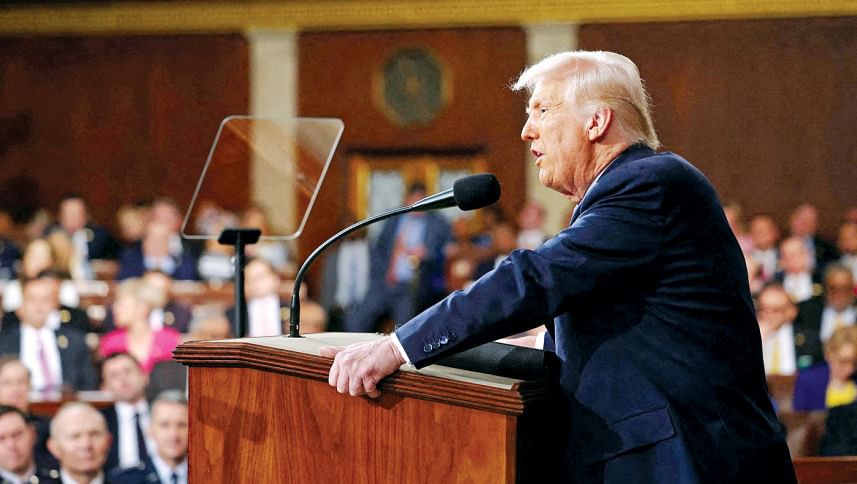Trump’s trade tactics have a timing problem

The annual winter address to Congress is usually a US president's chance to urge legislators to pass his agenda. Donald Trump, appearing before lawmakers on Tuesday for the first time since returning to the White House, instead explained how he planned to ignore lawmaking in favor of executive action. His theory of how best to nurture an industrial renaissance is exemplified by the rare legislation that did warrant mention: $53 billion in semiconductor funding that he wants scrapped. Instead, Trump pushes tariffs as the means to force supply chains back onshore. CEOs can make plans based on settled law. They can't depend on an agenda that's all short-term pain without the stability to notch long-term gains.
Trump's Republican party controls the legislature. Yet his speech mostly focused on executive action. The president said that his tariffs, wielded without congressional restraint, would "make America rich again." He admitted that a "little disturbance" should be expected in the near-term. That's perhaps a nod to the S&P 500 Index's 6 percent tumble from its mid-February high as 25 percent tariffs on Canada and Mexico take effect.
Ideally, this pain would be the price for a more self-sufficient America, where farmers rely on local markets and manufacturers set up US facilities to avoid levies. But factories require billions of dollars of spending coupled with years of careful planning, negotiations, and investor acquiescence. CEOs need to know that the conditions pushing them towards this investment won't suddenly disappear.
Trump's trade policy promises no such thing. It was unclear whether the latest tariffs would happen until just hours beforehand. Commerce Secretary Howard Lutnick continues to say that they may be altered. Sure, companies will scramble to build an immediate buffer – the trade deficit in goods surged to $153 billion in January, an all-time high according to the Commerce Department. But transforming this into the confidence to make new, long-term investments seems, for now, a remote possibility.
Legislation promises more stability – not just from one president's whims, but between administrations. The CHIPS Act, passed by members of both parties, has supported $380 billion of projects, the Semiconductor Industry Association reckons. Yet Trump is undermining that, too. Many of the staff managing the program have been fired, and funds now could be yanked away. Non-binding commitments from chipmakers like Taiwan Semiconductor Manufacturing seem a meager recompense.
Despite total control, Trump might have reason to distrust the legislative process: Republicans' majorities are slim and ideologically unwieldy. If so, though, he's traded inertia for self-defeating chaos.

 For all latest news, follow The Daily Star's Google News channel.
For all latest news, follow The Daily Star's Google News channel. 



Comments